Projects
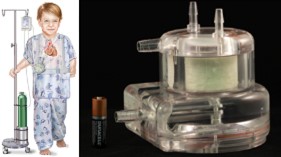 Integrated pump-oxygenator intended to provide long-term (1-3 months) respiratory support to pediatric patients
Integrated pump-oxygenator intended to provide long-term (1-3 months) respiratory support to pediatric patients- High gas exchange efficiency and compact design enable a small overall device that can be used paracorporeally and allow for patient ambulation
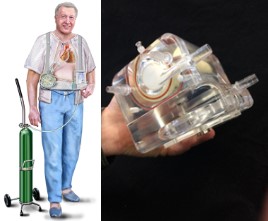 Integrated pump-oxygenator for simplified respiratory assistance
Integrated pump-oxygenator for simplified respiratory assistance- The unique fiber bundle design provides high oxygenation efficiencies (>276 ml/min/m2)
- The small simple design is intended for ambulatory support for 1-3 months
- Bench driven design that is computational fluid dynamics optimized
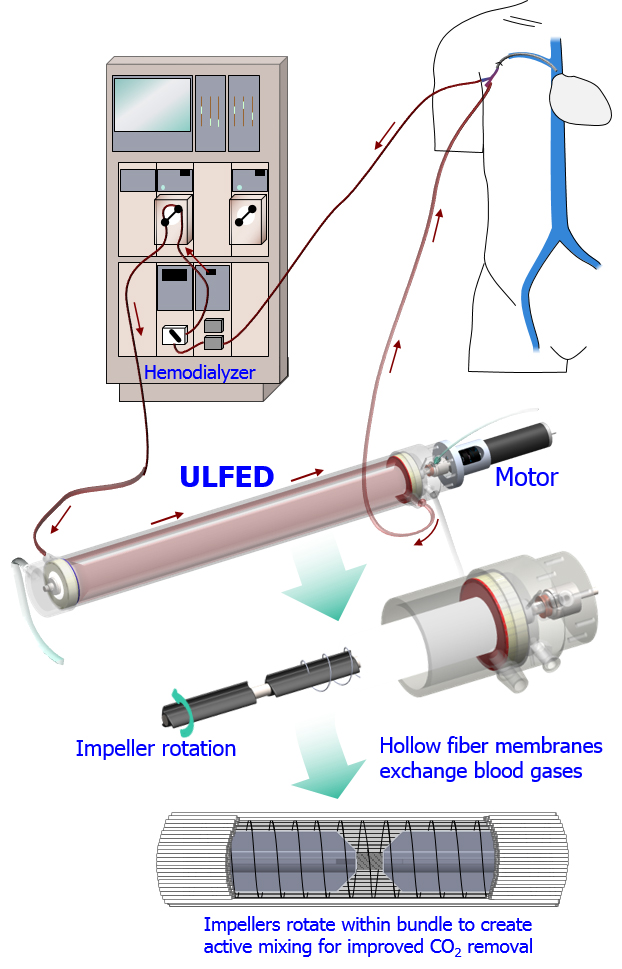 Extracorporeal CO2 removal (ECCO2R) at hemodialysis blood flows (250 mL/min) to prevent intubation or allow protective ventilation for patients with COPD and ARDS
Extracorporeal CO2 removal (ECCO2R) at hemodialysis blood flows (250 mL/min) to prevent intubation or allow protective ventilation for patients with COPD and ARDS- Impeller mixing enhances gas exchange to remove 37% of the metabolic CO2 production
- Operation analogous to dialysis allows simplified and minimally invasive respiratory support
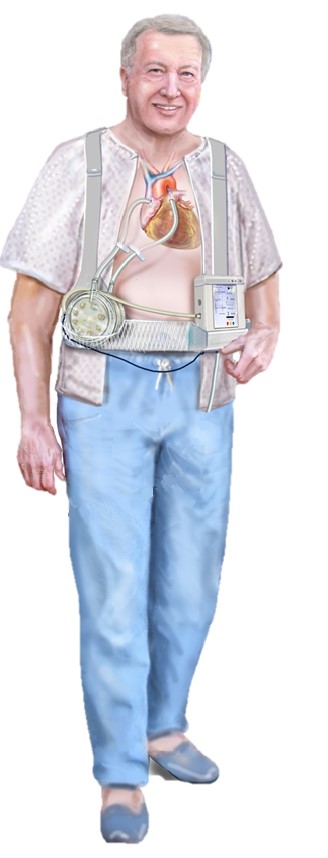 Integrated ECCO2R device is compact and wearable, allowing for patient ambulation
Integrated ECCO2R device is compact and wearable, allowing for patient ambulation- Blood flow rates below 1 L/min permit less invasive cannulation
- The device removes greater than 30% of metabolic CO2 and can prevent intubation or allow protective ventilation for patients with COPD and ARDS
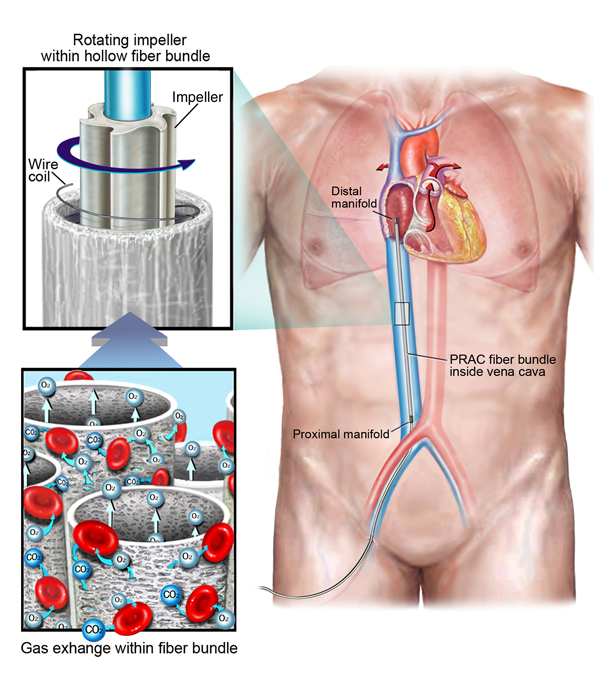 Intravenous catheter composed of hollow fiber membranes
Intravenous catheter composed of hollow fiber membranes- Internal rotating impellers enhance gas exchange efficiency
- Partial breathing support independent of the lungs
- Treatment of patients with short term reversible lung failure
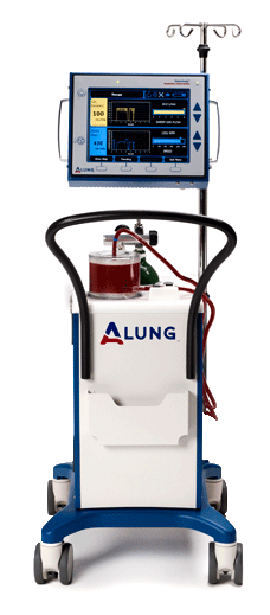 ALung is commercializing the Hemolung Respiratory Assist System (RAS), a dialysis-like alternative or supplement to mechanical ventilation originally developed at the University of Pittsburgh.
ALung is commercializing the Hemolung Respiratory Assist System (RAS), a dialysis-like alternative or supplement to mechanical ventilation originally developed at the University of Pittsburgh.- The Hemolung RAS removes carbon dioxide and delivers oxygen directly to the blood, allowing the patient’s lungs to rest and heal. A simple extracorporeal circuit, small venous catheter, and techniques similar to hemodialysis make the Hemolung RAS easy to use.
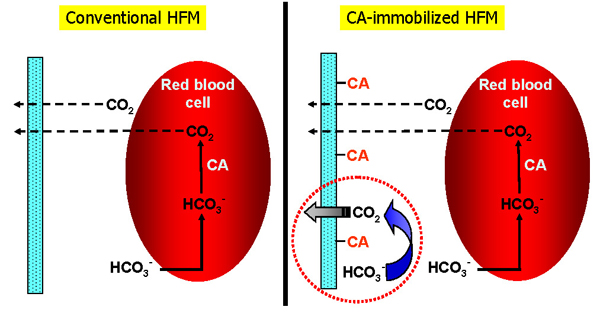 The limiting factor in CO2 elimination is physiological, since over 90% of CO2 in blood is carried as HCO3- (bicarbonate)
The limiting factor in CO2 elimination is physiological, since over 90% of CO2 in blood is carried as HCO3- (bicarbonate)- Carbonic anhydrase (CA) catalyzes the dehydration of HCO3- to CO2
- Enhanced CO2 removal can be realized through CA coatings for Hollow Fiber Membranes
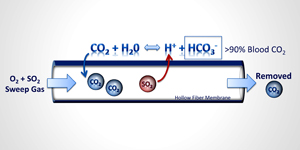 A dilute acidic gas is introduced to the oxygen sweep gas passed through the hollow fiber membranes of artificial lung devices
A dilute acidic gas is introduced to the oxygen sweep gas passed through the hollow fiber membranes of artificial lung devices- Dilute sulfur dioxide in oxygen sweep gas can further increase CO2 removal rates by creating an acidic microenvironment at the HFM surface facilitating dehydration of bicarbonate to CO2
- Dilute acidic sweep gas can increase CO2 removal, and when used in combination with bioactive CA-HFMs has a synergistic effect to increase CO2 removal efficiency by 150%
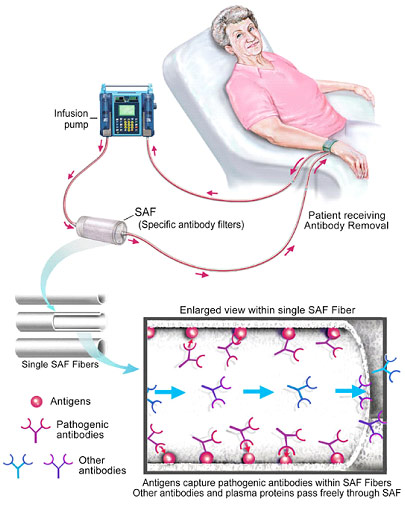 Develop a novel blood storage system that will extend the shelf life of additive system red cell units
Develop a novel blood storage system that will extend the shelf life of additive system red cell units- Deliver red cells of higher efficacy and lower toxicity for transfusion therapy
- Red cells are stored in a modified additive solution under oxygen-depleted condition (anaerobic storage)
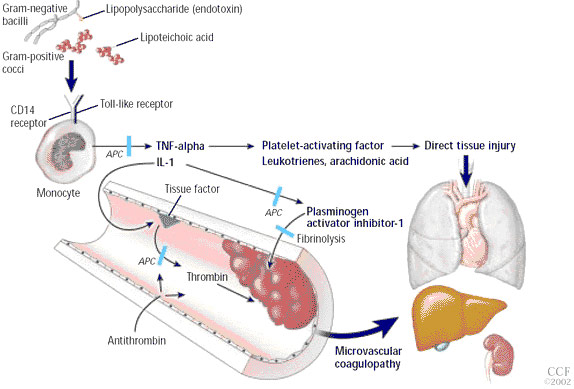 Extracorporeal blood purification device that removes the inflammatory molecules which cause severe sepsis
Extracorporeal blood purification device that removes the inflammatory molecules which cause severe sepsis- Device packed with adsorbing polymer beads covered in biocompatible coating
- Cytokines involved in sepsis adsorbed on beads
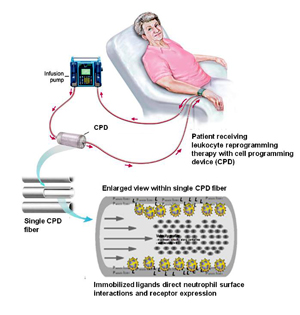 Fiber device containing immobilized CXCL8 which will have the ability to alter the activity state of neutrophils in whole blood.
Fiber device containing immobilized CXCL8 which will have the ability to alter the activity state of neutrophils in whole blood.- Techniques being developed could eventually be applied to numerous diseases involving all circulating cells
 Intravenous catheter composed of hollow fiber membranes
Intravenous catheter composed of hollow fiber membranes- Incorporates mechanisms for creating efficient gas exchange
- Partial breathing support independent of the lungs
- Treatment of patients with short term reversible lung failure
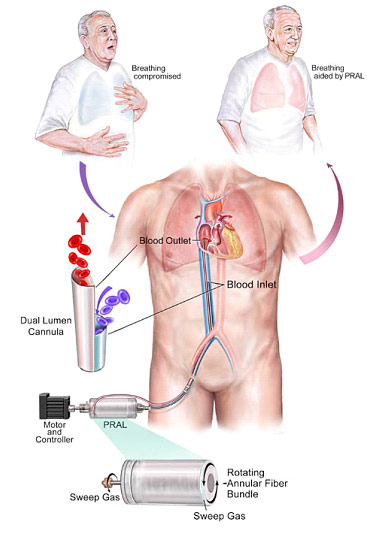 Wearable external device with a rotating fiber bundle
Wearable external device with a rotating fiber bundle- Rotating fiber bundle provides efficient gas exchange and pumping ability
- Offers increased breathing support compared to respiratory catheter
- Requires relatively low blood flow rates: respiratory dialysis
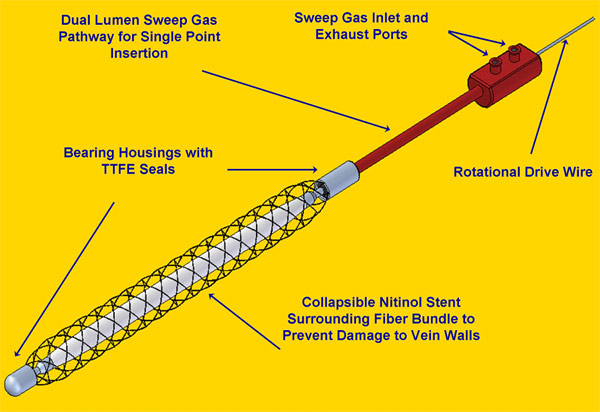 Intravenous catheter composed of hollow fiber membranes
Intravenous catheter composed of hollow fiber membranes- Internal rotating impellers enhance gas exchange efficiency
- Partial breathing support independent of the lungs
- Treatment of patients with short term reversible lung failure
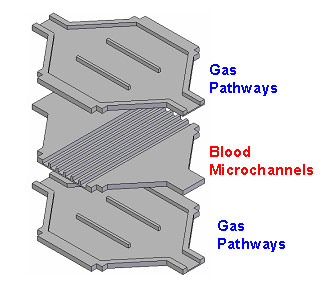 Composed of microfabricated units that mimic exchange sacs of natural lungs
Composed of microfabricated units that mimic exchange sacs of natural lungs- Vascular cells coat blood pathways for improved blood biocompatibility
- Compact respiratory device design compared to traditional respiratory devices
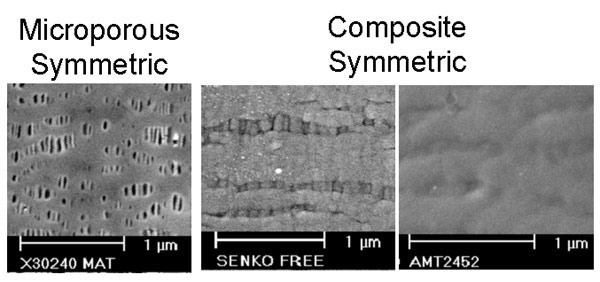 Fiber polymer coatings for improved blood biocompatibility
Fiber polymer coatings for improved blood biocompatibility- Attachment of biomolecules on fibers to provide novel functionality
- Coatings of active polymeric microspheres on membrane surfaces

